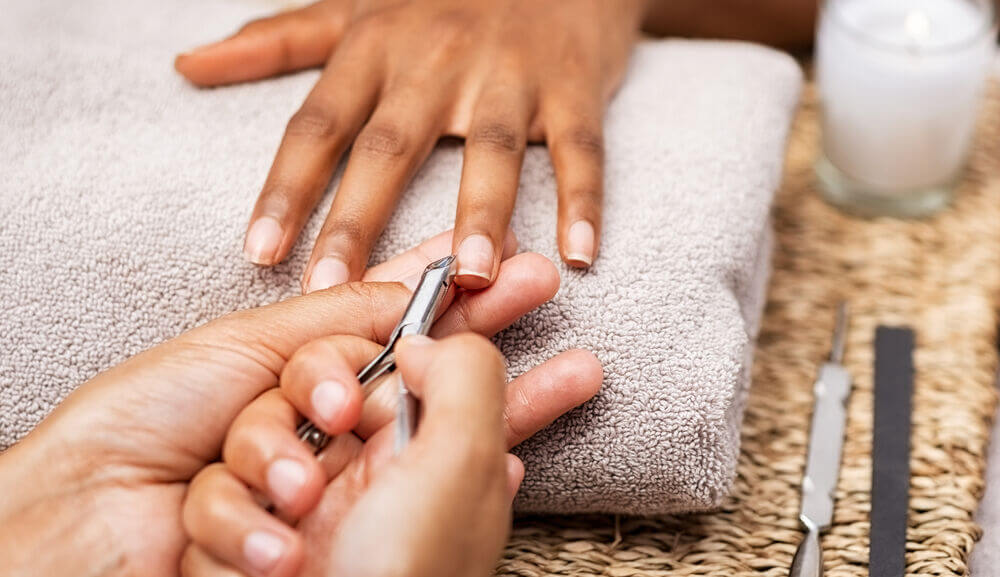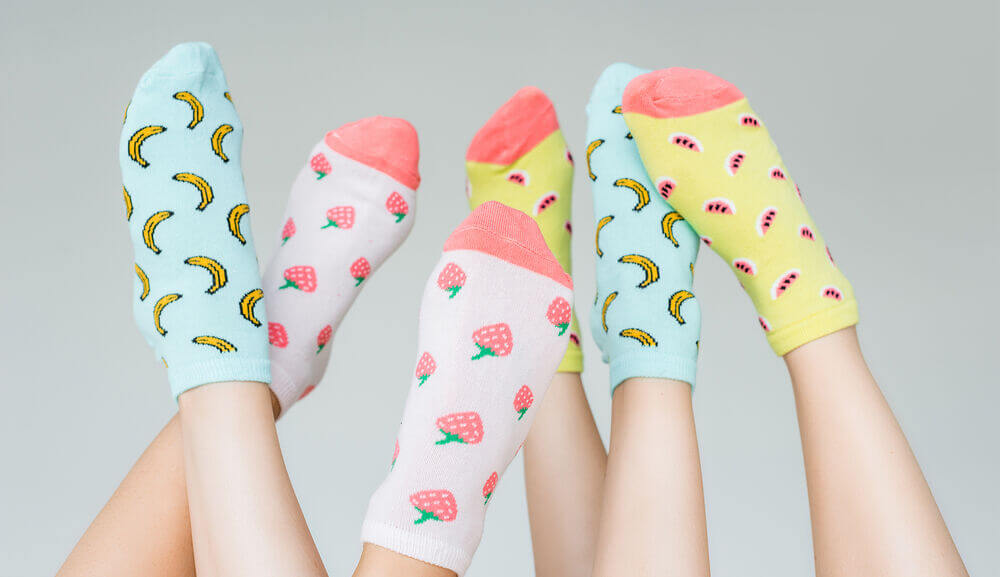Healthy nails are an integral part of a neat, tight appearance. They can also be indicators of your overall health. Unhealthy nails can signal unrelated concerns such as stress, vitamin deficiencies or even heart disease. But nail – and toenail – maintenance doesn’t have to be difficult and can actually benefit your overall health.
To strengthen nails and keep them looking flawless, we can start by analyzing some basic lifestyle habits. We cover common nail concerns and how to avoid them, as well as nail-worthy tips and products to get healthy nails in no time.
6 Common Nail Concerns
Showing off strong, healthy nails can be a big confidence booster – but sometimes, our nails aren’t as perfect as we’d like them to be. While it’s easier to spot red flags with our hair or skin, it can be more difficult to recognize signs of discomfort in the nails. Keep reading for the top causes of unhealthy nails and their causes.
Fragility
Onychoschizia is a fancy word for a condition where nails become brittle and tear or break easily. The most common cause is repeated wetting and drying of the nails, which can make them drier and more likely to split.
First, try using gloves whenever the nails are exposed to water for a long time – such as when washing dishes.
Second, a high-quality natural hand cream will help by replenishing moisture levels and forming a natural protective barrier over chapped or degraded skin. Our Coconut Hand Cream can nourish and soften your skin and cuticles in no time – and it smells great!
Weakness
It’s all fun and games until someone breaks a nail! Soft or weak nails will break easily or break if they are bent too much. Avoid excessive moisture or excessive exposure to detergents, household cleaners, and harsh nail polishes that contain acetone.
Wear gloves when cleaning to avoid exposing your hands to chemicals that can weaken your nails. You can also choose natural cleaning products, which by design are meant to be gentler on skin and nails.
Discoloration
Whether you opt for polished perfection or a natural look, one thing’s for sure: no one wants discolored nails. A yellow tint, green, blue—and yes, even black—are all some not-so-pretty results of nail discoloration.
Yellow nails – relatively common – are usually the result of prolonged retention of polish, while other discolorations may be the result of deficiency, trauma or infection. Be sure to talk to your primary care doctor if you have concerns about your nail color.
Nails
There are few things as annoying (or as painful) as fingernails. This annoying nail pain is actually caused by a small tear in the skin, near the tip of the fingernail or fingernail. Ingrown toenails can be caused by a number of things, from biting your nails to using harsh soap and detergents.
A little TLC for your hands and nails can go a long way. Our ultra-rich, non-greasy French Lavender Hand Cream is designed to deeply hydrate callused hands with the soothing scent of French lavender.
Sagging skins
It can be easy to miss those tiny half skin moons at the bottom of our nails. This moon of clear skin is known as the cuticle and is important for sealing the skin to the nail – and keeping out harmful bacteria. When they dry out or start to recede, this can be a sign that your skin has become too dry.
To care for your cuticles, soak your hands and feet in warm water for 10 minutes. After towel drying, apply nail and cuticle oil to prevent dryness or irritation from nail fungus. If you think something other than dryness is causing your toes to recede – or slowly disappear – talk to your doctor.
Inner nails
If pain came to your mind describing an ingrown toenail, you hit it nail on the head! An ingrown toenail is caused by pressure from the inverted growth of the nail tip on the skin of the toe. The most common cause is wearing too tight shoes or improper nail care and trimming.
For temporary relief, soak your foot in salt water daily for 10 minutes. Do not cut your nails too short and avoid scratching and cleaning the edges of the nails with anything sharp.

10 Tips for healthy nails
Many less than desirable nail conditions can be avoided with proper toe and toenail care. The fastest way to stronger, healthier nails is through simple lifestyle changes – and ditching some bad habits, like using your nails as a built-in pocket knife!
#1: Take breaks from nail polish
When was the last time you gave your nails a break from nail polish? Let your nails breathe by removing the polish once a week or as soon as they start to chip. Toenails can stay 2-3 weeks. Otherwise, you could be left with brittle or discolored nails from prolonged wear.
Between painting and mani/pedis, give your nails at least 1-2 weeks off in between.
#2: Trim and manicure nails properly
Trim nails straight for healthy growth and to prevent ingrown nails. Avoid cutting nails too short, rounding the edges, or cutting toenails in a V shape.
You should also never cut your cuticles and only push them back as needed. And if you use emery paper to file your nails, be sure to swipe in one direction, not back and forth (this can split the nail).
#3: Avoid harsh products
Harsh products such as acetone can weaken nails, leading to discoloration and brittleness. Gel polish and adhesives can cause long-term damage to the nail bed and cuticles, especially if they are peeled or detached from the nail.
#4: Clean and trim nails properly
When it comes to keeping your hands and nails clean, make sure you use products that protect moisture. Use a moisturizing hand soap, a gentle but effective hand sanitizer gel, or a hand sanitizer spray that is packed with moisturizers.
Regular trimming can also help prevent common problems such as ingrown toenails and toenails.
#5: Clean manicure and pedicure tools
To prevent bacteria growth, soak your tools in a jar of rubbing alcohol or hydrogen peroxide and let them sit for a few minutes. Let them dry and then store them in an airtight container.

#6: Change your socks regularly
Sweaty feet do more than just smell your socks! When left on for too long, socks provide the perfect breeding ground for fungus and bacteria. Bring extra socks to change into if you know you’ll be sweating!
#7: Keep cuticles moisturized
Healthy cuticles equal longer, stronger nails. Keep them hydrated and protected with cuticle oil to prevent dryness or worse – bacterial or fungal infections.
#8: Wear the right footwear
Wear shoes that fit properly to avoid discomfort or ingrown toenails. Be sure to wear flip-flops in public showers to reduce the risk of cross-contamination. If your feet are exposed to water, wear waterproof shoes or water shoes if you don’t mind getting wet. Just make sure you have a pair of dry socks and shoes for when you’re done!
#9: Avoid nail biting
For some, this habit can be hard to break – but avoid biting your nails. These habits can damage the nail bed, cause abnormal growth, or worse, permanently damage keratin: the tissue that helps your nails grow.
#10: Don’t use your nails as tools
Avoid using your nails like a Swiss army knife. Try using the pad of your finger to open cans instead of your fingernails. When it comes to simple tasks like opening shipping boxes or peeling off labels, use a tool. You will save your nails or manicure if you do!
Get more nail health tips and more:
Frequently asked questions about healthy nails
What are the signs of healthy nails?
Healthy nails are smooth, without pits or grooves. They are stable in color and texture and do not stain or discolour. In general, healthy nails are strong and flexible, indicating a well-nourished and well-groomed nail bed and cuticle.
How can diet affect the health of my nails?
Diet plays a critical role in nail health. Nails are made up of a protein called keratin, and a diet rich in protein can help strengthen nails. Including biotin-rich foods such as eggs, almonds, and whole grains, as well as vitamins A, C, D, and E, omega-3 fatty acids, and zinc, can promote nail health.
Can wearing nail polish too often damage my nails?
Frequent application of nail polish can lead to dry, brittle nails due to the chemicals in nail polishes and nail removers. It is essential to give nails a break between polishes, use acetone-free removers and apply a base coat to protect nails from stains and chemical exposure.
What are the best practices for nail trimming and grooming?
For optimal nail health, trim nails regularly with sharp nail scissors or clippers, following the natural curve of the fingertips. Treat cuticles by gently pushing them back with a cuticle push after showering or bathing and avoid cutting them. Keep nails clean and dry to prevent bacterial growth.
How can I protect my nails from breaking and splitting?
To protect nails from wear and tear, keep them properly moisturized with a good nail cream or cuticle oil. Avoid using your fingernails as tools to open or pop things. When doing chores, especially those that involve water or chemicals, wear gloves to protect your nails from potential damage.
